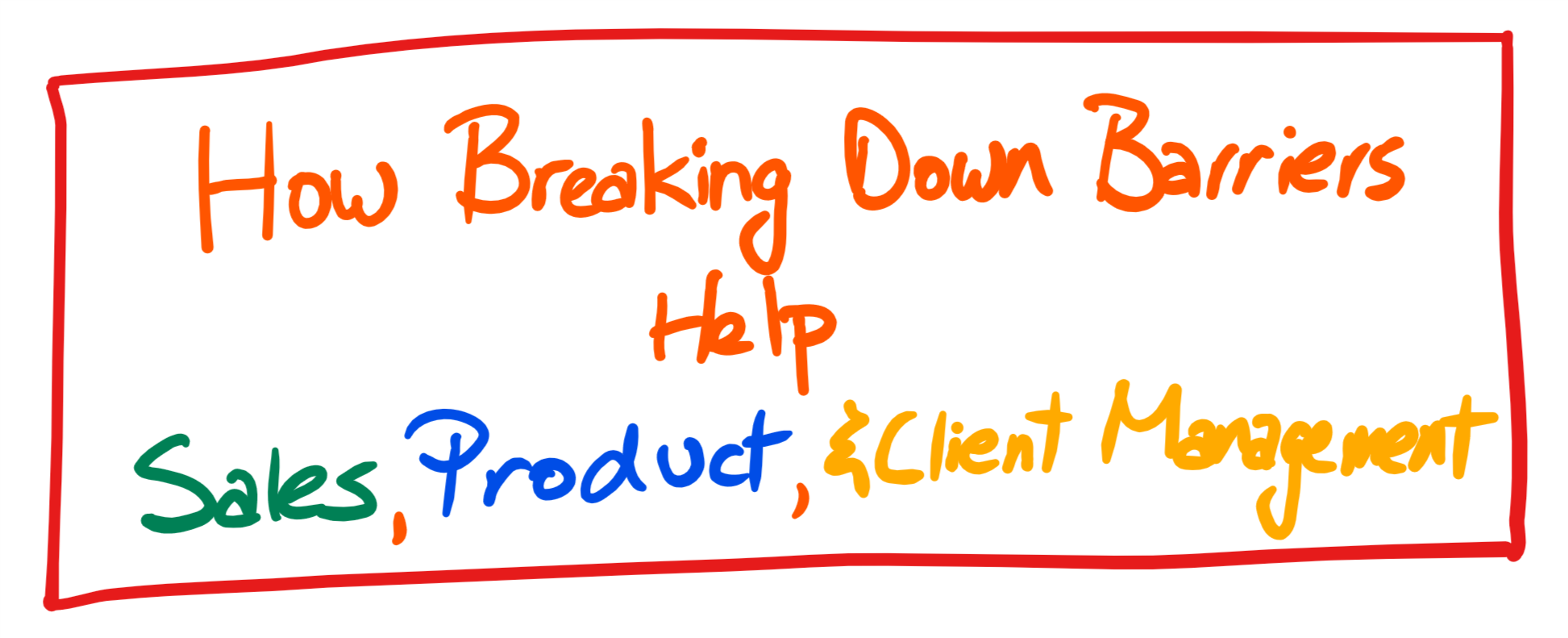The Professional Services Guidebook
Everyday PS
The everyday doesn't have to be mundane. There's inspirational work in the daily activities that we do for our teams.
Alright, it’s time to spread some positivity after the last article. If buy-in is so important for collaboration, then how do we get real clear with our teammates about our collective commitment before we embark on a solution? Here are 3 questions we should ask so we can get clarity on the problem, the effort, and the rollout of a solution.
Groupthink is terrible for decision making, but dissent that make a team go around in circles is probably worse. We’ve all been a part of long meetings where no one agrees but nobody feels they’ve accomplished anything when they leave the room. Break the cycle by disagreeing without being disagreeable. Read on to find out how to dissent for a cause and to be a a great dissenter.
As technical consultants, our relationships with our clients tend to be very transactional. They call us, we solve their problems. We can do much better... and we can start by being better human beings. What does that mean? Read on to find out!
Teams that compete and win all have one thing in common: They train. They train hard, and they train often. So, why should our team be any different? Read on to find out how intense team training focusing on developing and improving our synaptic responses can be a great way to spread knowledge and build confidence amongst ourselves and our clients.
Why is pattern recognition important for services teams? How does our pattern recognition help our organization figure out anticipatory problems? Where do we get started? We dive into the 3-step process on how professional services teams can take our learnings, make it relevant, and affect positive change for our clients.
Part III on our series on breaking down barriers. We all know why it's a good idea to work more closely with our colleagues, and how we all benefit. This week, I lay out 4 concrete exercises that you can run with your sales and product teams to build rapport, learn from one another, and contribute to each other's success.
Part II of the breaking down barriers series. We look at how our skills in pattern recognition of client and industry trends, articulation of technical pains, and identification of chronic pain can help our colleagues in adjacent teams like sales, product management, and client management.
Working in silos is detrimental to your health! Here are 4 reasons why working with other teams is much better than working alone in a departmental vacuum.
What happens when we start giving away our work for free? Clients get the wrong idea of the value we bring to our table, commitment takes a hit, and our internal teams start asking questions on how we're contributing to our organization. We look at 3 reasons why we shouldn't be giving away our work, and a tactic to assign value without assigning cost.
What are the reasons why some projects stay on track while others derail? We look at a couple of factors outside our influence (lack of options and the fear of missing out), and one strategy we can all use (alignment with our client's business roadmaps) to ensure our projects always keep moving forward.
Part 2 of the series on Pain. When our clients come to us with immediate pains, it presents an opportunity for us to mine deeper to find out their big anticipatory pains. Forming an agreement that bigger pains exist, correlating anticipatory pains to their immediate hurt, and building a solution that address the short-term first will help you build the trust needed for your clients to come to you with their biggest business problems.
PS teams exist to identify, diagnose and solve client pain. In part 1 of a 2 part series on client pain, we break down the 3 types of client pain and lay out why one specific pain called anticipatory pain should be the single biggest focus of any PS team.
Great meetings results in consensus built, decisions made, and directions agreed to. Bad meetings not only undermine consensus and decisions, but it also destroys team trust resulting in resentment, grudges, and apathy. Here are my 2 rules to great meetings that help teams leave nothing on the table so they can foster participation, understanding, and cooperation.
There's a difference between being a consultant and a trusted advisor. The big difference between the two is a genuine fearlessness that makes the trusted advisor treasured by clients everywhere. Be that trusted advisor: listen, ask, and respond fearlessly.
Being a great trusted advisor to your clients should be the goal of every professional services consultant. It all starts with listening with an empathetic ear, asking the pointed questions, and responding fearlessly.














